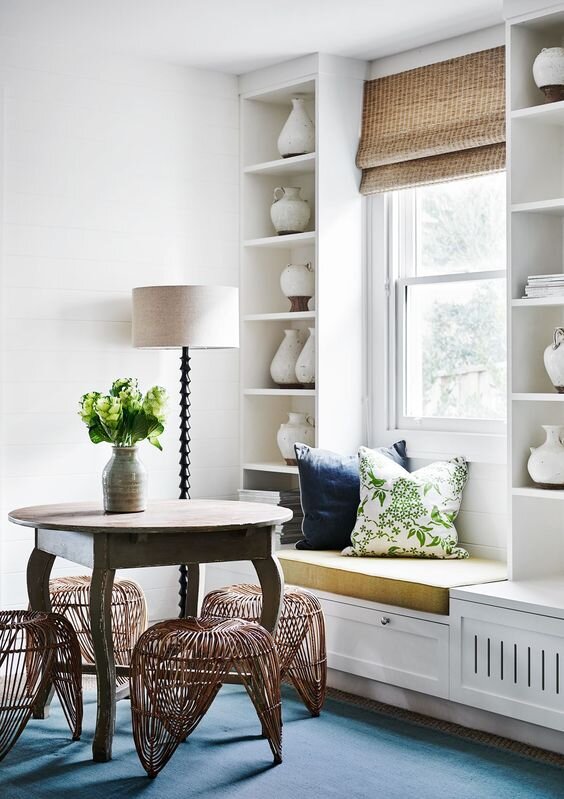Unexpected ways that working with a designer can open up your space - and your mind.
Image via Pinterest
Working with an interior designer can sometimes be a bit like going to therapy. It’s my job to connect with the client, build trust, maybe expose a few areas of vulnerability. Eventually ideas come up; perceptions shift. And somewhere in the process there’s a lightbulb moment.
I love when our clients say, ‘My designer just helped me discover something that was always in me!’ It becomes a personal, expressive, creative experience for a lot of people. The goal is to provide a safety net. Then as the relationship progresses, clients will start to take bigger risks and make bolder statements.
As with any risk-taking endeavor, there are obstacles—often right at the beginning. Choosing between matte and gloss can be deceptively tricky if you’ve never really thought about it before. The same goes for deciding between an eighteenth-century tallboy and a mid-century modern credenza. And then there’s the bigger question of where do you even begin!?!?!
That’s where I come in. With my background and experience in design, I’ve seen firsthand how I can not only help someone overcome aesthetic obstacles but occasionally provide counsel in some very unexpected ways.
See obstacles as inspiration
Limited light. A tiny kitchen. Zero storage. Every space has its hiccups, but instead of letting those hinder design dreams, let them lead. You need to build a room as you build anything, where you start with your constraints—whether it’s a spatial constraint, a lighting constraint, a lifestyle constraint—and let those inform the decision-making.
Don’t try to keep up with the Joneses
You know that dining room you think you need? Well you actually may not. People get bogged down in the theory that they have to have this and that. But it’s wiser to design your home according to how you want to live in it. Do you want to have areas for entertaining, space to work, or a room to host out-of-town guests? These are the types of questions I ask before we start to plan out the design —because good design creates and encourages new experiences in our lives.
Think outside of the storage box
Image via Homes To Love
Designers see solutions to problems you didn’t even know you had. For example, a problem often faced is storage and designers can convert under utilised space into discreet storage. Open shelving is a place to display beautiful objects easily accessible with more hidden storage tucked away in other areas.

